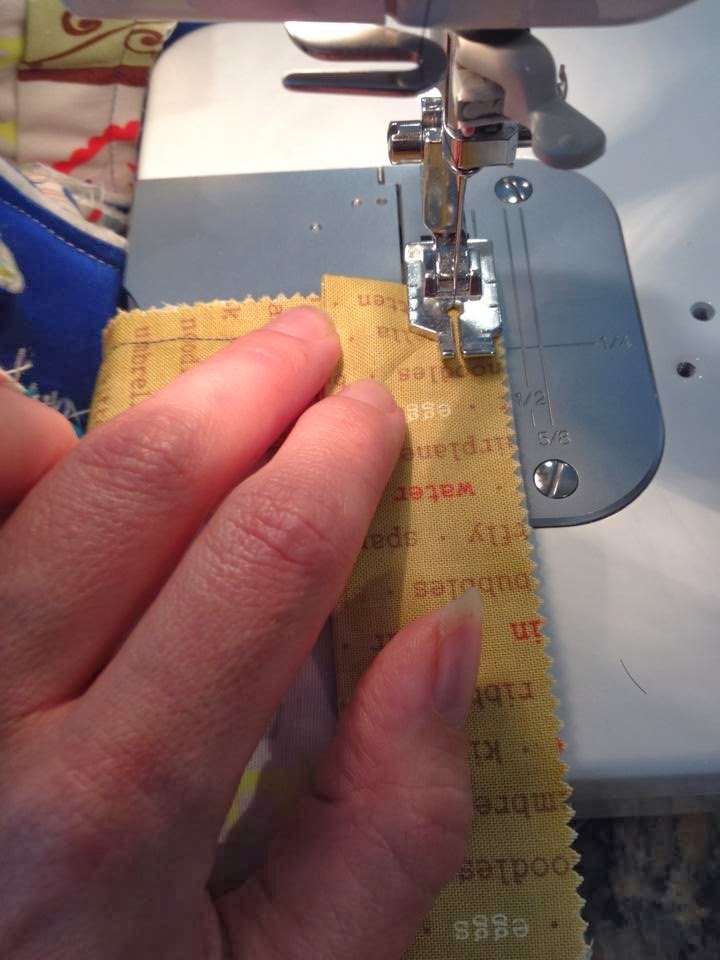Most instructions for quilting say something like "quilt as desired" at this point. And that's why I didn't try quilting for years. It seemed like some sort of magic. It's not.
For this quilt, we just followed the lines of the squares and "stitched in the ditch" between the squares and sashing. This is just using your regular machine and sewing lines.
Another option is meandering quilting or small loops. Both are easy and require absolutely no amazing ability to draw. There are tutorials all over the internet about this.
My favorite tutorial for free motion quilting is at http://www.youtube.com/watch?v=39I5A3iyCtw
It's a 4 part series, but gives a great overview of how to free motion quilt.
For stitch in the ditch, just use your machine as is, sewing right on your seam lines.
Now that you've finished quilting, it's time to trim and bind the quilt. To trim, cut the batting and backing to the exact edge of the top of the quilt.
To bind your quilt, you're going to need 8 strips of fabric (width of the fabric - about 44"), each 2 1/4" wide. Cut your 8 strips and then sew them together into one long strip. For this quilt, we used a scrappy binding. Iron the length of binding in half so the right side is out.
Now, it's time to pin the binding onto the quilt. Pin it onto the back, starting at least 12" away from a corner.
For the corners, Oh Fransson has the best tutorial:
http://www.ohfransson.com/oh_fransson/2009/04/quilt-along-15-making-and-sewing-binding.html
When you have pinned around your quilt, you will have extra binding. Cut each edge to have 1" extra and pin them together.
Once the binding is pinned, it's time to sew it. Use a 1/4" seam allowance and sew all around the binding, starting about 6" from where you started pinning.
Here is a picture of sewing corners. Sew to the fold and reinforce it. Cut the thread, turn the quilt, and start at the corner fold again (refer to the Oh Fransson tutorial for excellent instructions).
When you almost reach the end, stop about 6" before the end of your binding. Cut your thread, match up your binding ends and sew them together, and then go back and sew the last part of your binding to the quilt.
At this point, you need to iron the binding to the front. Make sure to iron evenly, not worrying too much about the corners.
Now, sew at the very, very edge of the binding, on the front of the quilt. To make corners, fold one side over the other, but there's no need to stop stitching at corners; simply turn the quilt.
When you finish, wash your quilt with a Shout Color Catcher, and dry it.
Congratulations!





























